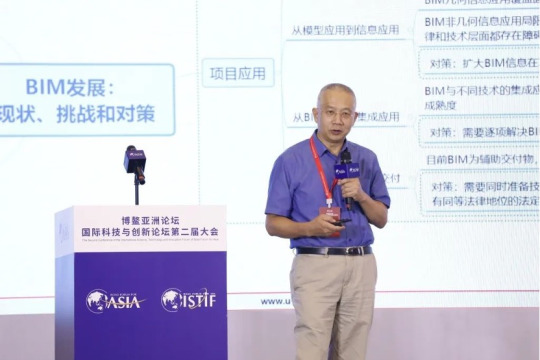#bim modeling in uk
Explore tagged Tumblr posts
Text
best bim company in uk
British BIM service providers offer expert building information modelling solutions meant for architects, engineers, and contractors. Our services include 3D modelling, clash detection, coordination, and comprehensive documentation, all aimed at streamlining the construction process. We prioritize precision, collaboration, and adherence to British BIM standards, enabling clients to lower expenses, enhance efficiency, and successfully complete high-quality projects across residential, commercial, and infrastructure domains.
https://instagram.com/bimservicesllc
https://www.linkedin.com/company/bim-services-llc/
0 notes
Text
Get the Best Steel Detailing Services in Glasgow, United Kingdom

Steel Detailing Services are provided by Silicon EC UK Limited in Glasgow, United Kingdom. Our engineering company offers comprehensive steel detailing solutions tailored to meet your exact needs. With years of experience and a dedicated team of professionals, we guarantee high-quality results that exceed your expectations. Our team consists of highly skilled and experienced steel detailers who are proficient in using the latest software and technologies to produce precise and detailed drawings. We prioritize accuracy in every aspect of our work. From initial concept drawings to final fabrication drawings, we ensure that all dimensions, connections, and details are meticulously checked to eliminate errors and avoid costly rework. Our cost-effective solutions help you save both time and money without compromising on quality. By optimizing resources and leveraging our expertise, we strive to provide maximum value for your investment. Contact us today to discuss your project requirements and discover how our premium Steel Erection Drawing Services can add value to your project. We look forward to partnering with you for success!
Supports and software facility:
Our dedicated workforce comprises steadfast QC heads, proficient Team Leads and experienced Steel Detailers who possess extensive expertise. Our Tekla Steel Detailing Services adeptly utilize cutting-edge software, including Tekla Structure showcasing a commitment to staying at the forefront of technological advancements.
Silicon EC UK Limited is a leading provider of Miscellaneous Steel Detailing Services in Glasgow, UK, offering a comprehensive suite of solutions designed to optimize the efficiency and performance of steel engineering projects. With a focus on accuracy, innovation, and client satisfaction, Silicon EC UK Limited continues to set the benchmark for excellence in the steel detailing industry.
For More Details Visit our Website:
#Steel Detailing Services#Tekla Steel Detailing Services#Structural Steel Detailing Services#Structural Steel Shop Drawing Services#Steel BIM Modeling Services#Steel Assembly Drawing Services#Steel Shop Drawing Services#Steel Shop Drawing Company#Joist Steel Detailing Services#Miscellaneous Steel Detailing Services#Tekla Steel Detailing Company#Joist Steel Detailing Services#Steel Erection Drawing Services#Assembly Shop Drawing Services#AutoCAD Steel Detailing Services#Steel Detailing Services in UK#Engineering Services#Engineering Company#CAD Design#CAD Drafting#CAD Drawing#CAD#CADD
0 notes
Text
Best Architectural 3D Revit Modeling Services at Affordable Price

Chudasama Outsourcing is a leading Architectural BIM company that provides high standards of services and quality. We provide high-quality 3D Revit Modeling Services at an affordable price. We take great pride in being able to produce excellent quality Revit modeling services to our clients overseas. Our clients are located in the USA, UK, Canada, New Zealand, Australia, and UAE, etc. We provide services like Architectural, Structural, MEPF, Shop Drawings, and as-built Drawings in Revit. If you want to outsource any such services, then contact us at [email protected]
#revit modeling services#3d revit modeling services#architectural revit modeling#architectural revit modeling services#3d architectural revit modeling#outsource revit modeling services#bim modeling services#architectural#revit#building information modeling
3 notes
·
View notes
Text
Building Skills: How Construction Training Programs Shape Future Professionals

In the ever-evolving landscape of the construction industry, having a skilled and knowledgeable workforce is more critical than ever. From infrastructure and commercial buildings to residential developments, the UK construction sector remains one of the most significant contributors to the economy. As demands grow for safer, more sustainable, and technologically advanced structures, so too does the need for qualified professionals. This is where Construction Training Programs in the UK play a pivotal role—by shaping the future of the industry through education, skill development, and practical experience.
The Growing Demand for Construction Skills
The construction industry in the UK is facing a notable skills shortage. According to multiple industry reports, thousands of new workers are required each year to meet current and future demands. With large-scale projects on the horizon, including infrastructure upgrades, green energy developments, and urban regeneration initiatives, the need for competent and trained personnel is urgent.
Construction training programs aim to bridge this gap by offering structured, industry-aligned education that prepares individuals for the real-world challenges of construction work. These programs equip learners with both theoretical knowledge and practical abilities, laying the foundation for a successful career in construction.
What Do Construction Training Programs in the UK Offer?
Construction Training Programs in the UK are designed to cater to a wide range of learners, from school leavers and apprentices to experienced professionals seeking upskilling or reskilling opportunities. These programs can vary in length, scope, and specialisation, but typically include the following core components:
Health and Safety Training: Given the physical nature of construction work, safety is paramount. Training programs place a strong emphasis on occupational health and safety, teaching students how to identify hazards, use protective equipment, and follow best practices to minimise risk.
Technical Skills Development: Whether it’s bricklaying, carpentry, plumbing, electrical work, or operating heavy machinery, technical training is at the heart of these programs. Learners gain hands-on experience under professional supervision to ensure competence in their chosen field.
Project Management and Planning: As construction becomes more complex, understanding how to manage resources, timelines, and teams is essential. Training often includes modules on project planning, budgeting, and communication, giving students insight into the managerial aspects of construction.
Sustainability and Innovation: Modern construction is increasingly focused on sustainability. Training programs now include education on eco-friendly materials, green building techniques, and emerging technologies like Building Information Modelling (BIM) and prefabrication.
Certifications and Qualifications: Successful completion of a construction training program often results in industry-recognised certifications. These credentials not only enhance employability but also provide a clear pathway for career progression.
Benefits of Enrolling in Construction Training Programs
1. Enhanced Employability
One of the biggest advantages of enrolling in construction training programs in the UK is the improved job prospects. Employers are more likely to hire candidates who have undergone formal training and possess certifications that demonstrate their capabilities.
2. Career Flexibility and Progression
Construction training opens the door to numerous career paths. From becoming a site supervisor or surveyor to progressing into project management or consultancy roles, trained individuals have the flexibility to shape their career according to their interests and strengths.
3. Hands-on Experience
These programs often include real-world projects or internships that allow learners to apply their knowledge in practical settings. This experience is invaluable in building confidence and preparing for full-time roles.
4. Support for Career Changers
Construction training programs are also ideal for individuals seeking a career change. Many courses are tailored for adult learners and offer part-time or online options to accommodate different lifestyles and responsibilities.
5. Contribution to National Development
By participating in construction training, individuals also play a role in shaping the future of the UK’s built environment. Skilled professionals are essential in delivering projects that improve communities and drive economic growth.
Who Should Consider Construction Training?
School Leavers: Those looking to enter the workforce directly after school can benefit from apprenticeship programs or foundation courses.
Graduates: Individuals with academic backgrounds in engineering or architecture can enhance their practical skills through specialised training.
Skilled Workers: Tradespeople seeking formal certification or wishing to expand their skill set.
Career Changers: Adults aiming to transition into a more hands-on, in-demand industry.
The Future of Construction Training in the UK
As the industry adopts new technologies and standards, Construction Training Programs in the UK are evolving accordingly. Virtual reality (VR), simulation tools, and digital platforms are increasingly integrated into training environments, offering immersive learning experiences. In addition, there is a strong focus on diversity and inclusion, encouraging participation from underrepresented groups and promoting equal opportunities within the sector.
Government support and funding schemes further enhance accessibility, making it easier for people to start or advance their careers in construction.
Final Thoughts
Construction is more than just building structures—it’s about building communities, shaping skylines, and improving quality of life. Construction Training Programs in the UK serve as the cornerstone of this mission by preparing individuals to meet the challenges and opportunities of a dynamic industry. Whether you’re starting, switching careers, or seeking to upgrade your skills, enrolling in a reputable training program can be your first step toward a rewarding and impactful career.
With the right training, dedication, and guidance, the next generation of construction professionals will not only meet the demands of the present but will also pioneer innovations that define the future of the built environment.
#Construction Training Programs in UK#Construction Training Programs#Construction Training#construction industry#Construction Courses#construction#united kingdom#uk
0 notes
Text

Building Information Modeling (BIM) is transforming the architecture, engineering, and construction (AEC) industries, enabling smoother project management, improved collaboration, and cost-efficient designs. If you’re looking for the top BIM services companies in the USA, this guide will help you explore the leading names including Clovetech USA, a standout provider known for its expertise in BIM outsourcing and Scan to BIM services.
This list covers the Top 10 BIM services companies in the USA, offering a detailed breakdown of their strengths and specialties. Whether you’re searching for BIM Modeling services near me Scan to BIM companies in USA or simply want a list of BIM services companies in USA this guide has you covered.
Why BIM Services BIM services are essential for modern construction projects. From detailed 3D modeling to clash detection and MEP coordination, BIM ensures that every phase of a project runs seamlessly. Whether you’re an architect designing a complex structure or a contractor seeking efficient execution, partnering with a reliable BIM company is crucial. Let’s dive into the BIM services companies in USA
1. Clovetech USA — Your Trusted BIM Partner Clovetech USA stands tall among the best BIM services companies in the USA offering end-to-end BIM solutions to support diverse industries, including residential, commercial, industrial, infrastructure, and healthcare projects. With an experienced offshore team and proven results in countries like the USA, UK, India, Romania, Ireland, Australia, France, Germany, New Zealand, and Canada Clovetech USA ensures world-class BIM delivery at competitive rates. Clovetech USA’s Key BIM Services:
BIM Modeling Services — Detailed 3D models that enhance visualization and design precision.
Scan to BIM — Transforming point cloud scans into accurate BIM models for renovation and restoration projects.
MEP Coordination — Ensuring mechanical, electrical, and plumbing systems are perfectly aligned.
Clash Detection — Preventing costly on-site errors by identifying and resolving design conflicts early.
4D/5D BIM — Time and cost simulations for better project planning.
LOD (Level of Detail/Development) — Tailored models from LOD 100 to LOD 500, based on project requirements. 2. United BIM United BIM is one of the Top Scan to BIM services companies in USA delivering high-quality BIM modeling, coordination, and laser scanning services. United BIM focuses on helping architects, engineers, and construction firms achieve faster project delivery and higher accuracy with their data-rich BIM models. 3. Turner Construction Company Turner Construction is a leader in the AEC industry, widely recognized for its ability to handle complex, large-scale projects. Their BIM team supports pre-construction planning, clash detection, and schedule simulations, helping clients visualize projects before breaking ground. Turner’s expertise in BIM enhances project accuracy, reduces delays, and ensures cost control. 4. Mortenson Mortenson integrates innovation into its processes. Their BIM services span from early design phases to final project handover. They excel in laser scanning, point cloud processing, and virtual reality simulations, offering clients a fully immersive project experience. 5. Jacobs Engineering Group Jacobs combines traditional engineering with digital twin technology to improve infrastructure, aviation, transportation, and industrial projects. Their BIM models enable real-time monitoring and operational insights. 6. Hensel Phelps Hensel Phelps focuses on pre-construction planning, clash detection, and site logistics planning, helping clients optimize productivity and ensure design precision on large government, aviation, and commercial builds. 7. Skanska USA Skanska integrates virtual design and construction (VDC) with BIM technology, prioritizing sustainability, energy modeling, and lean construction to minimize material waste and improve delivery times. 8. Gensler Gensler, a global design leader, offers design-centric BIM services, helping clients explore aesthetics, functionality, and sustainability through immersive 3D models, perfect for commercial, retail, and corporate projects. 9. Thornton Tomasetti Thornton Tomasetti combines structural analysis with advanced performance modeling. Their BIM services support seismic safety, resilience, and sustainability — especially for skyscrapers and stadiums. 10. Stantec Stantec offers sustainability-driven BIM workflows, blending architecture, engineering, and consulting. They specialize in infrastructure, water, and environmental projects, creating data-rich, efficient models. Get in touch with Clovetech — and let’s build smarter, faster, and better together!
0 notes
Text
BIM Software: Revolutionizing the Future of Building Design and Construction
Introduction
The architecture, engineering, and construction (AEC) industry is undergoing a transformative shift, thanks to the evolution of BIM Software. Building Information Modeling (BIM) Software is no longer a luxury but a necessity for modern infrastructure development. As the demand for smarter, more sustainable buildings grows, the role of BIM Software in optimizing design, enhancing collaboration, and reducing project costs is more critical than ever.
In this article, we explore how BIM Software is revolutionizing the construction landscape, its core features, major players in the market, and how institutions like Technostruct Academy are preparing the next generation of professionals to lead this digital transformation.
What is BIM Software?
BIM Software is a digital tool that enables architects, engineers, and construction professionals to create, manage, and share a building's data throughout its lifecycle. From concept design and visualization to construction and facility management, BIM Software serves as a central hub for intelligent decision-making.
Unlike traditional 2D CAD tools, BIM Software creates intelligent 3D models that include geometry, spatial relationships, geographic information, and properties of building components. This holistic approach results in fewer design conflicts, better coordination, and faster project delivery.
Core Features of BIM Software
The widespread adoption of BIM Software is largely due to its powerful features, which include:
3D Modeling and Visualization BIM Software provides detailed 3D visualizations, allowing stakeholders to understand complex designs in an intuitive way.
Clash Detection Automatic identification of design conflicts between different building systems (e.g., mechanical vs. structural) saves time and money.
Parametric Design Changes to one component automatically update related parts, maintaining consistency throughout the model.
Quantity Takeoffs BIM Software can generate precise material estimates, helping with budgeting and procurement planning.
Lifecycle Management BIM extends beyond design and construction, offering tools for facility operation and maintenance post-handover.
Major Players in the BIM Software Market
Some of the most prominent BIM Software solutions used globally include:
Autodesk Revit: A market leader that supports architectural design, MEP, and structural engineering workflows.
Graphisoft ArchiCAD: Known for its user-friendly interface and strong visualization capabilities.
Bentley Systems (AECOsim Building Designer): Popular for infrastructure projects and large-scale industrial work.
Trimble Tekla: Focused heavily on structural engineering and steel detailing.
The Global Shift Toward BIM Software
Governments and regulatory bodies in several countries have mandated the use of BIM Software for public infrastructure projects. For instance, the UK Government's BIM Level 2 mandate has spurred significant adoption across Europe. Similarly, India’s Smart Cities initiative has encouraged increased reliance on BIM Software for urban development.
This shift is not just regulatory but also economic. BIM Software can reduce total project costs by up to 20% by minimizing errors, optimizing workflows, and ensuring efficient resource utilization.
Technostruct Academy: Building BIM Leaders of Tomorrow
As BIM Software becomes a staple in construction and infrastructure development, the need for skilled professionals is skyrocketing. This is where Technostruct Academy plays a pivotal role.
Technostruct Academy offers industry-relevant training in BIM Software, preparing students and working professionals with practical, job-ready skills. With hands-on modules in tools like Revit, Navisworks, and AutoCAD, the academy bridges the gap between theoretical knowledge and real-world application.
What sets Technostruct Academy apart?
Industry-Vetted Curriculum: Designed by AEC professionals with years of experience in BIM Software implementation.
Project-Based Learning: Students work on real-life projects to build a strong portfolio.
Mentorship: Access to BIM Managers and engineers from Technostruct LLC, a leading BIM consultancy firm in the US and India.
Placement Support: Graduates benefit from career guidance and job placement assistance in leading construction firms.
BIM Software in Different Project Phases
The influence of BIM Software spans across every phase of a building’s life:
Design Phase: Architects use BIM to visualize and refine designs, integrating feedback from stakeholders.
Construction Phase: Contractors leverage BIM models to plan logistics, reduce rework, and streamline on-site coordination.
Post-Construction: Facility managers utilize BIM data for maintenance scheduling, asset tracking, and renovations.
Integration with Emerging Technologies
Modern BIM Software is now integrating with technologies such as:
Artificial Intelligence (AI): AI-enhanced BIM tools predict risks and optimize design layouts.
Virtual and Augmented Reality (VR/AR): Enhance stakeholder engagement and on-site training.
IoT (Internet of Things): Sensor data integrated with BIM models allows for real-time building performance monitoring.
Cloud Collaboration: Teams across the globe can work simultaneously on BIM models, increasing efficiency.
Future Trends in BIM Software
6D and 7D BIM: Beyond 3D modeling, 6D BIM integrates sustainability data while 7D focuses on facility management.
Generative Design: Algorithms automatically generate design options based on set constraints, saving time and resources.
BIM for Renovation: Scan-to-BIM solutions use laser scanning to create BIM models of existing structures, aiding renovation and retrofit projects.
Conclusion
BIM Software is not just a trend—it’s a cornerstone of the future of AEC. It empowers professionals to create smarter, more sustainable buildings, reduce costs, and improve project outcomes. As the demand for BIM expertise surges, institutions like Technostruct Academy are equipping professionals with the tools and skills to lead the digital revolution in construction.
Whether you're a student, a mid-career engineer, or a company aiming to upskill your team, learning BIM Software is a strategic investment. And with industry-backed training from Technostruct Academy, you're well-positioned to thrive in the future of building design and construction.
0 notes
Text
Exploring Structural Engineering: Careers, Courses, and Opportunities
Introduction
Structural engineering is a specialized branch of civil engineering that focuses on the design, construction, and maintenance of infrastructure such as buildings, bridges, tunnels, and dams. Structural engineers play a crucial role in ensuring that structures can withstand environmental forces and human usage while maintaining safety, durability, and functionality.
In this blog, we will explore what structural engineers do, courses available, career opportunities, and salary prospects for those interested in this field.
1. What Does a Structural Engineer Do?
Structural engineers are responsible for analyzing and designing structures to ensure they are strong, stable, and resistant to environmental pressures. Their key responsibilities include:
Structural Design & Analysis: Creating blueprints and using software like STAAD Pro, ETABS, and AutoCAD to model structures.
Material Selection: Choosing the best materials for durability, sustainability, and cost-efficiency.
Safety & Compliance: Ensuring buildings comply with government regulations, safety codes, and environmental standards.
Disaster-Resistant Construction: Developing earthquake-resistant buildings and flood-proof structures.
Inspection & Maintenance: Assessing existing structures for repairs and enhancements to prolong their lifespan.
Structural engineers work closely with architects, contractors, and construction managers to bring projects to life.
2. Courses for Structural Engineering
Aspiring structural engineers must pursue relevant courses that provide theoretical knowledge and practical training. The following are the major academic paths:
Undergraduate Degree (B.Tech/B.E. in Civil Engineering)
Duration: 4 years
Topics Covered: Mechanics of materials, structural analysis, fluid mechanics, geotechnical engineering
Institutes: IITs, NITs, SCOE, and other top engineering colleges
Postgraduate Degree (M.Tech/M.S. in Structural Engineering)
Duration: 2 years
Specializations: Advanced structural design, earthquake engineering, bridge engineering
Institutes: IITs, IISc, SCOE, and top private universities
Certification & Diploma Courses
Short-term courses in Building Information Modeling (BIM), STAAD Pro, Revit, and SAP2000.
Offered by universities and online platforms like Coursera, edX, and Udemy.
3. Career Opportunities & Job Roles
Structural engineers are in demand across various industries, including construction, real estate, infrastructure development, and research institutions. Some key job roles include:
Structural Design Engineer: Focuses on creating designs and blueprints for buildings and bridges.
Construction Project Engineer: Oversees construction projects and ensures compliance with engineering plans.
Bridge & Tunnel Engineer: Specializes in designing and maintaining transportation infrastructure.
Geotechnical Engineer: Works on foundation and soil analysis to ensure structural safety.
Structural Consultant: Advises on material selection, design modifications, and cost-effective solutions.
Academic & Research Engineer: Engages in teaching and developing innovative construction techniques.
With the rapid growth of urban infrastructure, the demand for structural engineers is expected to rise significantly.
4. Salary of a Structural Engineer
The salary of a structural engineer varies based on factors like experience, location, and industry. Below is an estimated salary range in India:
Experience Level
Average Salary (Per Annum)
Entry-Level (0-3 years)
₹4 - ₹7 LPA
Mid-Level (3-7 years)
₹7 - ₹12 LPA
Experienced (7+ years)
₹12 - ₹20 LPA
Senior Positions
₹20+ LPA
Internationally, structural engineers in countries like the USA, UK, and UAE earn significantly higher salaries, making it a lucrative career path for those willing to explore global opportunities.
Why Choose SCOE for Structural Engineering?
SCOE offers a comprehensive civil engineering program with a strong focus on structural engineering. Here’s why you should consider studying at SCOE:
Industry-Oriented Curriculum: Practical exposure to real-world projects and advanced structural design software.
Experienced Faculty: Learn from experts with industry and research experience.
State-of-the-Art Labs: Well-equipped structural mechanics and geotechnical engineering labs.
Internships & Placement Support: Collaborations with top construction firms and government agencies for job placements.
Conclusion
Structural engineering is a rewarding and high-demand career that combines technical expertise with creativity. As urbanization continues to grow, structural engineers will be at the forefront of designing safe, sustainable, and innovative structures.
If you are passionate about building the future, enrolling in SCOE’s structural engineering program can be your stepping stone to a successful career!
SCOE – Your Pathway to a Future in Structural Engineering!
0 notes
Text
Managing Health and Safety Risks on Infrastructure Projects (e.g., Bridges, Tunnels)
Infrastructure projects such as bridges, tunnels, and roadways form the backbone of a country's transportation network and economic development. However, these large-scale engineering projects carry significant health and safety risks for workers, contractors, and even the public. Effective risk management is not only a legal obligation but also an ethical and operational necessity. By systematically identifying, assessing, and mitigating potential hazards, project stakeholders can ensure safety and maintain productivity throughout the construction lifecycle.

Understanding Health and Safety Risks in Infrastructure Projects
Projects involving bridges and tunnels are complex, typically involving excavation, heavy lifting, confined spaces, electrical work, and exposure to weather conditions. Each activity carries its own set of health and safety risks:
Bridge construction can involve working at heights, handling heavy materials, and using cranes and other machinery. Falls from height remain one of the leading causes of fatalities in construction.
Tunnel construction often includes working in confined spaces with poor ventilation, where there is a heightened risk of fire, flooding, collapse, or exposure to hazardous gases like methane or carbon monoxide.
Poor planning, lack of training, inadequate equipment, and failure to adhere to safety regulations can all exacerbate these risks.
Legal and Regulatory Framework
In the UK, infrastructure projects must comply with the Health and Safety at Work etc. Act 1974, as well as more specific regulations like the Construction (Design and Management) Regulations 2015 (CDM 2015). These laws place duties on clients, designers, and contractors to ensure health and safety is prioritized at every stage—from design to execution.
A key component of CDM 2015 is the requirement to appoint a Principal Designer and Principal Contractor, both of whom must plan, manage, and monitor safety throughout the construction phase. Risk assessments and method statements (RAMS) are essential tools in this process, providing detailed documentation of potential hazards and the steps being taken to mitigate them.
Planning and Design: The First Line of Defence
Safety must be integrated into the design phase. For example, when designing a bridge, engineers should consider how maintenance personnel will access various parts of the structure without exposing themselves to fall risks. In tunnel projects, designers should address ventilation, emergency exits, and fire suppression systems from the outset.
Using Building Information Modeling (BIM) can further enhance safety planning by providing a digital representation of the project, allowing stakeholders to simulate construction activities and identify risks before work begins on-site.
On-Site Risk Management Strategies
Once construction begins, proactive health and safety management becomes critical. This includes:
Induction and Training: Workers must be trained not only in their specific job roles but also in emergency procedures, hazard recognition, and the use of personal protective equipment (PPE).
Monitoring and Supervision: Regular inspections and audits should be conducted to ensure compliance with safety protocols. Supervisors must have the authority and training to enforce safe practices.
Communication and Coordination: On large projects, multiple subcontractors may be working simultaneously. Effective communication ensures that all parties understand the site rules and emergency procedures.
Use of Technology: Drones, wearable sensors, and real-time site monitoring can detect safety breaches and help prevent accidents before they occur.
Case Example: The Importance of Local Expertise
In regions like Surrey and Hampshire, infrastructure development is ongoing and complex, requiring local knowledge of regulations and terrain. Partnering with consultants specializing in Health and Safety in Surrey and Health and Safety in Hampshire ensures that projects align with regional standards and best practices, thereby minimizing compliance risks and enhancing safety performance.
Emergency Preparedness
Despite best efforts, incidents can still occur. A robust emergency response plan is vital. This should include clear evacuation routes, designated first aid responders, access to emergency medical services, and regular drills to ensure preparedness. In tunnel construction, for instance, rapid response to incidents like tunnel collapse or gas leaks can mean the difference between life and death.
Post-Construction Safety and Maintenance
Health and safety don’t end with project completion. Infrastructure must be regularly inspected and maintained to prevent degradation, which can introduce new hazards. Scheduled maintenance should include thorough inspections of structural integrity, signage, lighting, and emergency systems.
Moreover, information gathered during the construction phase—such as health surveillance records and safety incident logs—can offer valuable insights for future projects.
Creating a Culture of Safety
Ultimately, effective management of health and safety risks is about creating a culture where safety is ingrained in every action and decision. Leadership plays a pivotal role here: when managers and supervisors demonstrate a commitment to safety, it sets a standard for the rest of the workforce.
Encouraging workers to report near-misses, providing channels for feedback, and recognizing safe behavior can foster a more engaged and responsible team.
Conclusion
Managing health and safety risks in infrastructure projects like bridges and tunnels is a multifaceted challenge that requires foresight, expertise, and collaboration. From design through to construction and eventual maintenance, every stage offers opportunities to reduce risk and protect lives. By adhering to legal obligations, employing technological solutions, and investing in a culture of safety, project managers can deliver not only successful infrastructure but also safe and sustainable workplaces.
#business#health#safety#safety training#health and safety#real estate#services#construction#health and safety hampshire#public health and safety#Health and Safety surrey
0 notes
Text
The Role of HEOR in Payer Decisions to Switch from Originators to Biosimilars
The Role of HEOR in Payer Decisions to Switch from Originators to Biosimilars
by Turacoz | Medical Publishing, Medical Writing

Biosimilars—biologic medicines that are highly similar to FDA-approved originator biologics—offer a cost-effective alternative without compromising clinical efficacy.1,2 Since the first U.S. biosimilar approval in 2015, however, their market adoption has progressed more slowly than expected, despite a steady increase in FDA approvals and their proven safety and effectiveness.3,4 Payers have been cautious in fully embracing biosimilars, even though they are pivotal in reimbursement decisions and prescribing patterns. Understanding the barriers to biosimilar adoption and exploring how Health Economics and Outcomes Research (HEOR) can address these challenges is crucial for unlocking the full potential of biosimilars in transforming healthcare access and affordability.
Why Are Payers Hesitant to Adopt Biosimilars?
Several key challenges slow biosimilar adoption among payers:4
Lack of confidence in interchangeability: Payers often demand robust safety and efficacy data to feel comfortable substituting originators with biosimilars
Limited financial incentives: Without clear cost savings or reimbursement benefits, payers may not prioritize biosimilar uptake
Administrative burdens: Complex approval processes involved in switching the treatments can deter payers from encouraging biosimilar use
These concerns have created a cautious environment, slowing down the transition from originator biologics to biosimilars. This is where HEOR plays a pivotal role by generating comprehensive evidence that addresses payer concerns through cost-effectiveness analyses (CEA), budget impact models (BIMs), and real-world evidence (RWE).
How HEOR Supports Biosimilar Adoption
Cost-Effectiveness Analysis (CEA)
The value of biosimilars, in comparison to originator biologics, can be assessed through CEA, which considers both their lower costs and comparable clinical efficacy.
For instance, CEA conducted in Canada for the treatment of metastatic colorectal cancer found that the biosimilars MVASI® and Zirabev® offered annual cost savings of €6379 compared to the originator drug, Avastin, without compromising survival outcomes. The study also supported the initial policy decision to mandate using bevacizumab biosimilars over the originator formulation. This approach helped reduce budget allocation toward bevacizumab and facilitated more efficient resource allocation while maintaining effective care.5 These savings highlight the potential for biosimilars to reduce healthcare expenditures without compromising patient outcomes.
Budget Impact Models (BIMs)
While CEAs assess value, BIMs estimate the actual financial consequences of adopting biosimilars on healthcare systems. BIMs help payers understand potential cost savings and resource allocation implications, which are critical for reimbursement decisions.
The practical impact of BIMs is evident in several European countries. The introduction of biosimilar adalimumab and tocilizumab across seven European nations—including the UK, Germany, and France—was projected to yield cumulative savings of €462 million and enable treatment for an additional 65,593 patients.6 Similarly, a U.S. study on biosimilar adalimumab showed that faster conversion rates from originator to biosimilar led to greater savings, with cumulative savings reaching $28.8 million in a fast-conversion scenario.7 This demonstrates that not only the decision to adopt biosimilars but also the speed of adoption impacts financial outcomes.
Real-World Evidence (RWE)
By leveraging RWE, researchers can better understand the clinical effectiveness and safety of biosimilars outside the structured environment of clinical trials. This data is crucial in building payer confidence by demonstrating that biosimilars perform similarly to originators in everyday clinical practice.
For instance, a real-world population-based study in British Columbia found no significant differences in healthcare resource utilization or clinical outcomes between biosimilar and originator etanercept users.8 This evidence helped underpin the province’s biosimilar switching policy. This policy dramatically increased biosimilar prescriptions: etanercept and infliximab biosimilar use rose by 76.98% and 58.43%, respectively. The switch generated substantial cost savings and improved patient access to biologic therapies without compromising safety or efficacy.9
How HEOR Influences Payer Decisions
HEOR evidence directly informs payer strategies in several ways:
Practical Influence
Cost Savings: Payers are motivated by the potential for significant cost reductions. For example, EU-5 markets saved €303.86 million with biosimilar rituximab.10 These savings can be reinvested to expand patient access or improve healthcare services.
Reimbursement Policies: HEOR informs the design of reimbursement frameworks, including price discounts, tendering processes, and mandatory switching policies. Countries like the UK and Germany have successfully implemented these strategies, which have been instrumental in driving biosimilar uptake.11,12
Theoretical Influence
Value-Based Healthcare: HEOR aligns with value-based healthcare principles by prioritizing interventions that deliver optimal outcomes at the lowest cost. Biosimilars exemplify this approach by reducing treatment costs without compromising quality.13
Policy Formation: Policymakers use HEOR findings to shape regulations encouraging biosimilar use. British Columbia’s biosimilar switching policy is a prime example, where evidence-based policy led to increased biosimilar uptake and substantial cost savings.9
Conclusion
In conclusion, as the healthcare system faces mounting pressures to deliver high-quality care while managing costs, adopting biosimilars stands out as a compelling opportunity that cannot be ignored. The collaborative efforts of regulators, payers, and providers, guided by robust HEOR evidence, are key to ensuring that the transition from originators to biosimilars is clinically sound and economically advantageous. HEOR has provided clear insights into cost-effectiveness, budget impact, and real-world performance, enabling payers to make informed decisions, optimize reimbursement strategies, and contribute to forward-thinking policy development. Ultimately, HEOR’s role in biosimilar adoption is not just supportive but transformative, paving the way for a more sustainable and accessible healthcare future.
References:
Yang J, et al. Greater uptake, an alternative reimbursement methodology needed to realize cost-saving potential of oncology biosimilars in the United States. J Manag Care Spec Pharm. 2021;27(12):1642-1651.
Mroczek DK, et al. Obstacles to Biosimilar Acceptance and Uptake in Oncology: A Review. JAMA Oncol. 2024;10(7):966-972.
Shubow S, et al. Prescriber Perspectives on Biosimilar Adoption and Potential Role of Clinical Pharmacology: A Workshop Summary. Clin Pharmacol Ther. 2023;113(1):37-49.
Edgar BS, et al. Overcoming barriers to biosimilar adoption: real-world perspectives from a national payer and provider initiative. J Manag Care Spec Pharm. 2021;27(8):1129-1135.
Lu B, et al. Cost-Effectiveness Analysis of Bevacizumab Biosimilars Versus Originator Bevacizumab for Metastatic Colorectal Cancer: A Comparative Study Using Real-World Data. Value Health. 2024;27(12):1689-1697.
Shastri K, et al. AB1428 Adalimumab and Tocilizumab Biosimilars in Europe: Budget-impact and Opportunity for Expanded Patient Access. Ann Rheum Dis. 2024;83:2069-70.
Chaplin S, et al. Budget impact analysis of including biosimilar adalimumab on formulary: A United States payer perspective. J Manag Care Spec Pharm. 2024;30(11):1226-1238.
Lacaille D, et al. POS0874 Comparable Safety and Effectiveness Among New Users of Biosimilar vs Originator Anti-NFTs in Inflammatory Arthritis: Population-based Evidence From a Policy Change. Ann Rheum Dis.;83:595-6.
McClean AR, et al. Uptake and Spending on Biosimilar Infliximab and Etanercept After New Start and Switching Policies in Canada: An Interrupted Time Series Analysis. Arthritis Care Res (Hoboken). 2023;75(9):2011-2021.
Jang M, Simoens S, and Kwon T. Budget Impact Analysis of the Introduction of Rituximab and Trastuzumab Intravenous Biosimilars to EU-5 Markets. BioDrugs. 2021;35(1):89-101.
Zhang W, et al.
Machado S, et al. Policy measures and instruments used in European countries to increase biosimilar uptake: a systematic review. Front Public Health. 2024;12:1263472.
Chen HH, Yemeke T, and Ozawa S. Reduction of biologic pricing following biosimilar introduction: Analysis across 57 countries and regions, 2012-19. PLoS One. 2024;19(6):e0304851.
0 notes
Text
Get the Best Laser Scan to BIM Services in Bristol, UK

Silicon EC UK Limited offers comprehensive Laser Scan to BIM Services in Bristol, UK, catering to the evolving needs of the construction and architectural industries. Our experienced team of engineers and BIM specialists transforms raw scan data into intelligent 3D models, seamlessly integrating them into the BIM environment. Our team of experienced professionals utilizes state-of-the-art equipment to conduct comprehensive laser scans, generating highly detailed point clouds that serve as the foundation for creating accurate 3D models. Our services empower clients to streamline project planning, enhance construction coordination, and minimize errors, ultimately leading to improved project outcomes and cost savings. Our commitment to excellence, combined with a collaborative approach, ensures seamless communication and transparency at every stage of the BIM project.
Supports and software facility:
Our dedicated workforce comprises steadfast QC heads, proficient Team Leads, and experienced Engineers who possess extensive expertise. Our BIM Services adeptly utilize cutting-edge software, including AutoCAD, Tekla Structure, and Revit Structure, showcasing a commitment to staying at the forefront of technological advancements.
We are a BIM Engineering Company that presents BIM Engineering Services Bristol and other cities covering London, Liverpool, Manchester, York, Leeds-Bradford, Glasgow, Newcastle, Sheffield, and Sunderland.
Choose Silicon EC UK Limited for comprehensive Laser Scan to BIM Services in Bristol, UK, and experience the difference in precision, reliability, and innovation for your next Building project.
For More Details Visit our Website:
#Laser Scan to BIM Services#Revit Scan to BIM Services#3D Laser Scan to BIM Services#Point Cloud to BIM Service#Scan to BIM Conversion Services#Scan to BIM Services#BIM Services#Building Information Modeling Services#Building Information Modeling#BIM#BIM Services Bristol#BIM Engineering Services UK#BIM Services UK#Laser Scan to BIM Services Bristol#Scan to BIM Services UK#CAD Design#CAD Drafting#CAD Drawing#Engineering Services#Engineering Company#Engineering Firm
0 notes
Text
Future-Proof Your Career with a BIM in Architecture Course
The world of architecture is evolving—and so are the skills architects need. One of the most in-demand technologies today is Building Information Modeling (BIM). Whether you're a student, a recent graduate, or a professional architect, enrolling in a BIM in Architecture course can be a game-changer for your career.
In this blog, we’ll dive deep into what BIM is, why it matters in architecture, what people are searching for in a BIM course, and how it can give you an edge in the competitive design and construction industry.
What is BIM in Architecture?
BIM (Building Information Modeling) is a digital process that allows architects and designers to create and manage building data throughout its lifecycle. It goes beyond 2D drawings—offering 3D models enriched with data, including materials, cost, time schedules, and sustainability factors.
Think of BIM as a smart, collaborative platform that helps architects, engineers, and construction professionals work better and faster.
What Are People Looking for in a BIM in Architecture Course?
Here’s what most learners are searching for:
Beginner-friendly modules
Hands-on training with essential software tools such as Revit, Navisworks, ArchiCAD, and more
Certification that's industry-recognized
Practical experience with key software tools like Revit, Navisworks, ArchiCAD, and others
Placement assistance or freelancing opportunities
Online flexibility or hybrid formats
Portfolio building support
What Will You Learn in a BIM Architecture Course?
A well-structured BIM course for architecture students typically covers:
Introduction to BIM & Its Importance
Revit Architecture – Basics to Advanced
3D Modeling Techniques
Clash Detection & Coordination
Quantity Take-off & Cost Estimation
Construction Simulation (4D BIM)
Documentation & BIM Execution Plan (BEP)
Interdisciplinary Collaboration using BIM
Live Projects & Case Studies
Popular BIM Tools You’ll Master
Autodesk Revit
Navisworks
AutoCAD
SketchUp + BIM plugins
ArchiCAD
BIM 360
These tools make you job-ready and also open doors for freelance architectural visualization or remote international work.
Career Opportunities After BIM Architecture Course:
The need for professionals proficient in BIM is rapidly growing both in India and internationally. Upon finishing the course, you’ll be eligible for roles such as:
BIM Architect
Revit Modeler
BIM Coordinator
Architectural Visualizer
3D Modeling Specialist
BIM Trainer or Consultant
Real-World Applications of BIM in Architecture:
Still wondering why BIM matters? Here are real examples of BIM in action:
Sustainable architecture: BIM helps reduce energy usage by simulating energy models.
Smart city planning: Government infrastructure projects in India now mandate BIM for accurate planning.
Restoring old buildings: BIM creates digital models to help preserve historic structures.
High-rise projects: Helps manage massive design coordination with engineers and MEP consultants.
Why Now Is the Best Time to Learn BIM:
The reality is, BIM isn’t something for the future—it’s already shaping the present.
Countries like the UK, UAE, and Singapore now need BIM for all public construction work.
Learning BIM now sets you apart and makes you job-ready in a tech-driven industry.
Conclusion:
If you’re pursuing architecture or already working in the field, learning BIM is no longer optional—it’s a necessity. A BIM in Architecture course not only equips you with essential tools but also trains you to think digitally, collaborate more effectively, and design with greater efficiency. With BIM, you’ll gain the ability to create detailed 3D models, enhance team coordination, and minimize errors during construction.
Whether your goal is to secure a high-paying job, work internationally, or launch your own architectural practice—BIM can help you get there faster, offering a distinct advantage in the competitive architectural industry."
0 notes
Text
On September 28, Boao Forum for Asia (BFA) held the Second Conference of International Science, Technology and Innovation Forum (ISTIF). As a major forum of the conference this year, the session “Digital Building, Future City” was successfully held.
The session was divided into two parts: keynote speech and roundtable discussion, hosted by Yidong He, Director of Bridge Technology at Parsons, USA. Eleven guests from China and overseas were invited to discuss the development of smart cities and international cooperation in the digital era and to address the challenges of the new pneumonia epidemic and boost the global economy.

Yidong He

Cheng Su
In the keynote speech session, Cheng Su, assistant president of the South China University of Technology and deputy director of the State Key Laboratory of Subtropical Building Science, commented that with the implementation of the construction strategy of the Guangdong-Hong Kong-Macao Greater Bay Area, the comprehensive management and control of urban all-spatial resources in the Greater Bay Area under the disaster environment has become an increasingly urgent topic to be addressed.
Su took the seismic risk assessment of the North Campus of the South China University of Technology as an example to elaborate the urban seismic disaster risk assessment strategy based on the BIM-GIS platform it is developing. The platform enables the rapid establishment of urban building complex exposure models and urban building complex seismic vulnerability curves, thus obtaining more reasonable high-resolution city-level seismic loss maps. This is particularly beneficial to the seismic risk assessment in the Guangdong-Hong Kong-Macao Greater Bay Area.

Jian Yang
Jian Yang, Chairman and President of the Zhujiang Foreign Capital Architectural Design Institute Co., Ltd. Guangzhou, addressed his opinion based on the topic "Consistent Design Thinking and Practice of Industry-wide Mode and Figure". In his presentation, Yang elaborated on how to solve the problems of efficiency, effectiveness and efficiency of BIM forward design, so as to realize the full-establishment BIM forward design with full staff, full project, full profession, full process, full support and full chain. On the basis of this, the practice of model-real consistency will be continued, trying to form a complete technical route of "model-real consistency" to provide a reliable digital base for the intellectualization of engineering projects.

Matteo Cominetti
Matteo Cominetti, CEO of Speckle, an international open-source platform, mentioned that the construction industry itself has achieved more innovation than ever as a result of open-source software, which is not a zero-sum game for companies, but a business model. For Speckle, at its core is a composable object model similar to a database, which allows users to combine, store and access different data for free through the platform, allowing all parties in a design and build project to share large professional files in the 3D format and automate their work in real-time.

David Philp
David Philp, Director of Digital Consulting, Strategy and Innovation at AECOM Europe, discussed in detail the UK's journey towards Construction 4.0. As he mentioned, the increasing number of digital twins and innovative modeling systems are empowering the community and profession to work efficiently. BIM as a highly specific tool to produce higher and better results, measurements, insights and investment decisions with fewer inputs, especially for new capital projects, enables more long-term insights, better measurement methods and feedback, and higher value.

Guanpei He
Guanpei He, BIM expert and Chairman of Ubiquitous Technology Limited Guangzhou, analyzed in detail the relationship between BIM and digital construction, intelligent construction and smart construction. He also discussed the BIM application environment faced by Chinese enterprises, the promotion mode of BIM in China, and the current situation, challenges and countermeasures of BIM development. He especially pointed out that in order to expand the application of BIM in construction scenes and integrated data, the primary issue is to solve the problem of integrated application of BIM and different technologies, so that BIM can become a technical condition for statutory delivery.

Dion Moult
Dion Moult, Emerging Digital Engineering Manager at Lendlease, talked about how open-source data is one of the only means of solving the problems with the current approach to creating digital buildings, and celebrating that with the explosion of new technologies, the industry will shift from a vendor-centric approach to a native open data approach which puts users back in control of the digital future.





Several guests joined the following roundtable discussion, they were, Yi Jiang, Managing Director of Huaxin Group Co., Ltd, Jinrong Tan, Professor of the Department of Electrical and Computer Engineering, Faculty of Science and Technology at the University of Macau and IEEE International Science Ambassador, Yichuan Deng, Managing Director of Guangzhou Huajian Intelligent Technology Co., Ltd, Nan Hu, Professor of the School of Civil Engineering and Transportation of South China the University of Technology, and Xiaofeng He, Marketing Director of Shenzhen Daoer Intelligent Control Technology Co., Ltd. They discussed the prospect and future of digital building development with their own experiences around topics such as microwave displacement sensing for elevator IoT, three fundamental dynamics of digital empowerment enterprises in the construction industry, digital building under 3D printing technology, and intelligent import/export management of digital building.
0 notes
Text
How to Become a BIM Manager: Skills, Education, and Certification
With the construction industry becoming increasingly digital and data-driven, the demand for skilled Building Information Modeling (BIM) Managers is soaring. If you are passionate about technology and the built environment, a career as a BIM Manager offers excellent prospects. This article explores the steps to become a BIM Manager, the essential skills and certifications, and how Technostruct Academy can help you get there.
Educational Background
To start your journey toward becoming a BIM Manager, a degree in Architecture, Civil Engineering, Construction Management, or a related field is typically required. This foundational knowledge helps in understanding the intricacies of construction and design.
Postgraduate diplomas or certifications in BIM further strengthen your qualifications. While academic credentials are crucial, industry-specific training is what sets you apart.
Essential Skills for BIM Managers
BIM Managers require a unique blend of technical, managerial, and interpersonal skills:
Proficiency in BIM Software: Tools like Autodesk Revit, Navisworks, AutoCAD, and BIM 360 are essential. Knowledge of clash detection, model coordination, and data management is also critical.
Project Management: The ability to lead teams, manage timelines, and ensure quality is key.
Communication: A BIM Manager interacts with architects, engineers, and clients, requiring excellent communication and negotiation skills.
Problem Solving: Projects often encounter design conflicts or software challenges. A BIM Manager must troubleshoot and implement solutions efficiently.
Certifications That Boost Your Career
Several industry-recognized certifications can enhance your credibility:
Autodesk Certified Professional in Revit or Navisworks
BuildingSMART Professional Certification
RICS BIM Manager Certification
These certifications validate your expertise and improve your job prospects.
Career Path and Opportunities
Starting as a BIM modeler or coordinator provides hands-on experience and a stepping stone to management roles. As you gain expertise, you can advance to Senior BIM Manager, BIM Director, or even Chief Technology Officer in large firms.
Countries like the USA, UK, UAE, and Australia have a high demand for BIM Managers due to mandates for BIM implementation in public projects.
How Technostruct Academy Can Help
Technostruct Academy has emerged as a leading institute for BIM education. Their structured BIM Manager course is tailored for real-world application and includes:
Live Internship Opportunities: Collaborate on live projects with top US-based firms.
Advanced Software Training: Hands-on sessions with Revit, Navisworks, and other BIM tools.
Mentoring by Industry Experts: Learn from professionals who understand global BIM standards.
Placement Assistance: Technostruct Academy provides job readiness support and connects students with global job opportunities.
Their curriculum is designed not only to teach software but to develop project leadership, model coordination, and quality control skills essential for BIM Managers.
Final Thoughts
Becoming a BIM Manager is a journey of continuous learning and upskilling. The role is challenging yet rewarding, with immense growth potential. Whether you're a recent graduate or a working professional looking to transition into digital construction, Technostruct Academy offers the tools, training, and mentorship to help you succeed. By investing in quality education and practical experience, you can unlock a successful career as a BIM Manager.
0 notes
Text
BIM services in the UK and Europe

Need expert BIM services in the UK and Europe? Tesla CAD has you covered. Our team provides clear, accurate digital models to support better planning and coordination. We serve architects, engineers, and contractors with solutions that save time and money.
Boost Project Success: BIM services in the UK and Europe
0 notes
Text
BIM involves the creation and management of construction data throughout the construction lifecycle. Building and building companies throughout the world service BIM to describe geometrical, spatial relationships, light analyses, geographic information, quantities and properties of building components. There are many advantages of BIM which include enabling its implementers to overcome the problem of poor design, which may arise, into substandard construction materials. BIM encompasses different views from the building model, arranged in an automatically consistent manner. In addition, BIM considers mistakes that would be made in making estimates for building materials, making it a valid process in the building and construction industry throughout the world. In Building and construction sectors, BIM refers to the digital representation of physical and functional characteristics of structures. In designing a BIM plan, factors such as increase in prices of materials which can inhibit the construction process management. This explains why BIM continues to be a thorough process in the construction sector. Making out estimates of building materials owes to factors such as in prices of materials or having uncertainties in making estimates. However, BIM enables companies avoid such problems as making out estimates by drawing plans, which include provisions, in case there are any constraints encountered during construction. BIM builds a digital format which appears as if it is being made physically. Currently, the UK government advocates for the use of BIM in delivering cost effective solutions in delivery of infrastructure across all sectors, including Telecommunication companies. However, in spite of this advocacy by the UK government, mobile telecommunication companies do not think it a requirement. Therefore, it becomes so crucial especially at this moment of intense agitation by the government, to adopt BIM among companies, as a way of seeking ways to implement the program. How about companies like Telecommunications where the system does not give primary consideration? GallifordTry is one of the unique construction and building companies found in the UK. The company has business units, “which provide infrastructure, transportation services” such as Turnkey- a program involving surveying/site acquisition, design, body and wealth management of client network infrastructure, to UK mobile telecommunication companies, in particular 02, Vodafone, and Orange. Vodafone is a global mobile telecommunication with headquarters in the UK. It is also the largest global telecommunications company basing on its revenues, and the world’s second largest after china mobile. 02 on the other hand, is UK’s leading mobile handset provider and broadband, offering the best phone, sim only and broad band deals. Orange is the fifth telecommunication company in the world, also found in the UK, but with proper headquarters in France. The three telecommunication companies, namely; orange, Vodafone and 02, are clients to GallifordTry Buildinmg and Construction Company. According to GallifordTry, Telecommunication companies do not show interest in the BIM process, yet it is cost effective in service delivery. On this note, Galliford, as a partner institution believes that it can affect the implementation of BIM in telecommunication companies. 2. Hypothesis Galliford can affect the implementation of BIM among Telecommunication sectors in the UK and gain a competitive advantage over other sectors in the UK government The theorem above is being needed to be checked alongside the following objectives; (a) To identify reasons why Telecommunication sectors such as 02, Vodafone and Orange do not take BIM as a prerequisite, in spite of it being an endorsement of the UK government (b)To determine whether, among the Telecommunication companies, are some outstanding individuals who would like to take part in implementing BIM program (c)To determine the strengths and weaknesses of implementing BIM among Telecommunication infrastructure sectors in the UK (d) To enable clients in the Telecommunication Infrastructure sector to benefit from the BIM program which among other benefits brings about cost effectiveness in delivering infrastructure Read the full article
0 notes
Text
How Health and Safety Standards Vary Across Different Construction Sectors

Construction is one of the most diverse and complex industries in the UK, comprising a wide range of sectors including residential building, commercial construction, civil engineering, industrial projects, and infrastructure development. Each of these sectors operates under the broad umbrella of national health and safety legislation, such as the Health and Safety at Work Act 1974 and the Construction (Design and Management) Regulations 2015 (CDM 2015). However, the implementation and operational focus of health and safety standards can vary significantly between these sectors. Understanding these differences is crucial for contractors, project managers, and safety officers who work across various types of construction projects.
Residential Construction
Health and safety standards in residential construction typically emphasize individual worker safety and site security. As these projects often occur in urban or suburban areas near inhabited spaces, there is a heightened focus on preventing public access to the site and minimizing environmental hazards such as dust, noise, and waste.
Residential projects are usually smaller in scale, and often involve fewer workers on site. This does not reduce the potential for accidents, however. Falls from height remain the most common cause of injury in this sector, especially during roofing and scaffolding work. Compliance with PPE (Personal Protective Equipment) usage, proper ladder techniques, and edge protection are critical. Given the relatively informal structure of some residential projects, especially those involving small or self-employed contractors, consistent enforcement of health and safety protocols can be challenging.
Commercial Construction
Commercial construction encompasses office buildings, retail centres, and multi-storey complexes. These projects are larger, more complex, and often involve multiple contractors and subcontractors working simultaneously. Health and safety standards in this sector are therefore more comprehensive and often require stricter coordination and management.
Site inductions, risk assessments, and method statements are rigorously enforced. Fire safety, temporary structures, crane operations, and heavy lifting equipment are just a few of the hazards that require specific attention. The use of technology, such as Building Information Modelling (BIM), can help in identifying potential safety risks during the design phase. Additionally, commercial projects often have stricter insurance and legal compliance requirements, which incentivize higher safety standards and regular auditing.
Civil Engineering and Infrastructure
This sector includes the construction of roads, bridges, railways, and utilities — projects that often span large geographic areas and are carried out in unpredictable or challenging environments. Health and safety standards here are influenced heavily by external factors such as traffic, weather, and public interaction.
Traffic management is a key element, particularly for roadworks. Workers are exposed to high-speed vehicles, making visibility and protective barriers essential. Working near railways or water also introduces specific regulatory frameworks, such as those governed by Network Rail or the Environment Agency. Site safety officers in this sector must coordinate with local authorities and emergency services to manage risk effectively. Moreover, as these projects may involve night work or operate in remote locations, additional precautions are necessary for worker fatigue, lighting, and communication.
Industrial Construction
Industrial projects include factories, power plants, refineries, and warehouses. These environments often involve hazardous materials, large machinery, and strict regulatory compliance, especially regarding environmental impact and occupational exposure.
Standards in this sector are closely aligned with those of the Health and Safety Executive (HSE), and include specific regulations for handling chemicals, managing confined spaces, and dealing with flammable substances. Workers are often required to undergo specialized training and certification before being allowed on site. Emergency response planning is also far more detailed, with site-specific procedures for spills, leaks, and mechanical failures.
Regional Variations and Local Enforcement
While the core legal framework remains consistent across England, regional enforcement and cultural attitudes can create subtle differences in how health and safety is prioritized. For example, construction companies operating in Health and Safety in Hampshire, Health and Safety in Sussex, or Health and Safety in Hertfordshire might face differing levels of scrutiny or local authority engagement. These variations can stem from the presence of more proactive local councils, differing levels of investment in construction training programs, or the historical presence of major construction firms that set a high local standard.
Moreover, rural vs urban dynamics can influence how risks are perceived and managed. In urban areas like Sussex, higher pedestrian density near construction zones increases the focus on public safety, while in more rural regions such as parts of Hampshire, environmental concerns may take precedence, especially when working near protected areas.
Conclusion
Health and safety standards in the construction industry are shaped not just by national legislation but also by the specific risks, scales, and scopes of each sector. From residential projects to industrial complexes, each sector demands tailored approaches to ensure worker and public safety. Awareness of these differences, along with regional variations such as those found in Hampshire, Sussex, and Hertfordshire, is essential for fostering a culture of safety across the construction landscape. Continuous training, clear communication, and strong leadership remain the cornerstones of an effective health and safety strategy, no matter the sector.
#health and safety hampshire#business#health#safety#safety training#health and safety#real estate#services#construction#health and safety in hampshire#Health and Safety Sussex#public health and safety#business services#food safety
1 note
·
View note